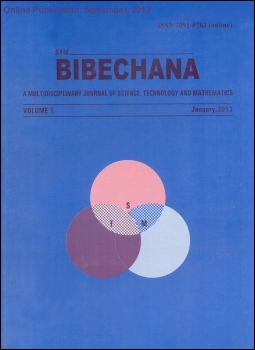Electrical conductivity and Knight shift of liquid alkali metals
DOI:
https://doi.org/10.3126/bibechana.v9i0.7181Keywords:
Electrical conductivity, Knight shift, Pseudopotential, Alkali metalsAbstract
In the present work we have considered two alkali metals - sodium and potassium - at their molten stage near the melting point. For the purpose of this theoretical investigation we have used Harrison’s first principle (HFP) pseudopotential technique which is basically an orthogonalised plane wave method. The electrical resistivity has been computed through Ziman’s formula. Then the electrical conductivity of the present metals is found out just by taking the reciprocal of the values so obtained. Our computed results have been compared with the experimental data and a good agreement is obtained. A study of the existing literature reveals that the work with the magnetic property like Knight shift of metals is scarce. This has encouraged us to apply the said HFP technique to study the Knight shift of the present alkali metals. For this purpose we have used Knight’s formula. Our computed values of Knight shift are in reasonable agreement for the metals under investigation.
DOI: http://dx.doi.org/10.3126/bibechana.v9i0.7181
BIBECHANA 9 (2013) 92-95
Downloads
Downloads
Published
How to Cite
Issue
Section
License
This license enables reusers to distribute, remix, adapt, and build upon the material in any medium or format for noncommercial purposes only, and only so long as attribution is given to the creator.




